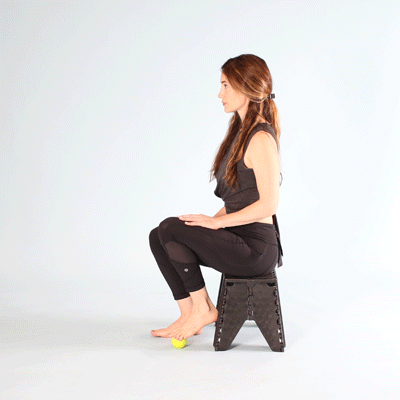Regularly performing some exercises like heel stretches may help reduce pain and correct fallen arches.
Flat feet (pes planus) are commonly known as fallen or collapsed arches. It’s a relatively common condition that can affect up to 30 percent of the population, causing symptoms in 1 in 10 of these people. Usually, both feet are affected, but it’s possible to have a fallen arch on only one foot.
Flat feet are caused by a variety of conditions including injuries, obesity, and arthritis. Aging, genetics, and pregnancy can also contribute to flat feet. You’re also more likely to have flat feet if you have a neurological or muscular disease such as cerebral palsy, muscular dystrophy, or spina bifida.
It’s important to care for flat feet properly since they can lead to pain, stress, and imbalances in other parts of your body. Working to treat flat feel can help to bring your entire body into alignment. This may help to correct other issues in your body that have been caused by flat feet.
Here are some exercises you can do to help
As you’re working through these exercises, focus on raising, strengthening, and lengthening your arches.
- Stand with your hands resting on a wall, chair, or railing at shoulder or eye level.
- Keep one leg forward and the other leg extended behind you.
- Press both heels firmly into the floor.
- Keeping your spine straight, bend your front leg and push yourself into the wall or support, feeling a stretch in your back leg and Achilles tendon.
- Hold this position for 30 seconds.
- Do each side 4 times.
- Sit on a chair with a tennis or golf under your right foot.
- Maintain a straight spine as you roll the ball under your foot, focusing on the arch.
- Do this for 2–3 minutes.
- Then do the opposite foot.
- Stand with your feet directly underneath your hips.
- Making sure to keep our toes in contact with the floor the entire time, roll your weight to the outer edges of your feet as you lift your arches up as far as you can.
- Then release your feet back down. You’ll work the muscles that help to lift and supinate your arches.
- Do 2–3 sets of 10–15 repetitions.
- While standing, lift your heels as high as you can.
- You can use a chair or wall to help support your balance.
- Hold the upper position for 5 seconds, and then lower back down to the floor.
- Do 2–3 sets of 15–20 repetitions.
- Then hold the upper position and pulse up and down for 30 seconds.
- Stand on steps with your left foot one step higher than your right foot.
- Use your left foot for balance as you lower your right foot down so your heel hangs lower than the step.
- Slowly lift your right heel as high as you can, focusing on strengthening your arch.
- Rotate your arch inward as your knee and calf rotate slightly to the side, causing your arch to become higher.
- Slowly lower back down to the starting position.
- Do 2–3 sets of 10–15 repetitions on both sides.
- Sit in a chair with a towel under your feet.
- Root your heels into the floor as you curl your toes to scrunch up the towel.
- Press your toes into your foot.
- Hold for a few seconds and release.
- Make sure to keep the ball of your foot pressed into the floor or towel. Maintain an awareness of the arch of your foot being strengthened.
- Do 2–3 sets of 10–15 repetitions.
For variation you can try doing this exercise in standing yoga poses such as Tree Pose, Standing Forward Bend, or Standing Split.
- While standing, press your right big toe into the floor and lift up your other four toes.
- Then press your four toes into the floor and lift up your big toe.
- Do each way 5–10 times, holding each lift for 5 seconds.
- Then do the exercise on your left foot.
You may wish to use an orthotic device to support your arches and reduce stress on your flat feet. They may help to improve function and alignment of your feet while providing support.
Orthotic devices can also help to absorb impact and reduce stress. You can buy ready-made devices or have them custom made. Stability shoes, such as motion control shoes, can also help to support your arches and provide extra cushioning.
Sometimes physical therapy can be used to correct flat feet if they’re the result of overuse injuries or poor form or technique.
Usually, surgery isn’t needed for flat feet unless they’re caused a bone deformity or a tendon tear or rupture. Sometimes surgery will be recommended if you have chronic foot pain from flat feet and haven’t improved after taking other measures.
Keep in mind that it may take a few weeks of doing these exercises before you begin to see improvements. Be consistent with your approach and continue doing the exercises even after you progress.
Developing a deeper awareness of your body can help you to determine how best to adjust your posture and movement during daily activities to correct body imbalances. Make a conscious effort to pay attention to how you stand, move, and position your body, making micro-adjustments as needed.
Talk to your doctor if you’re experiencing pain while standing or walking. You may also benefit from orthotics or physical therapy.


